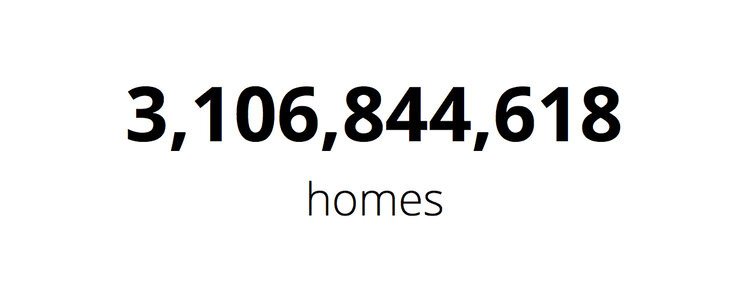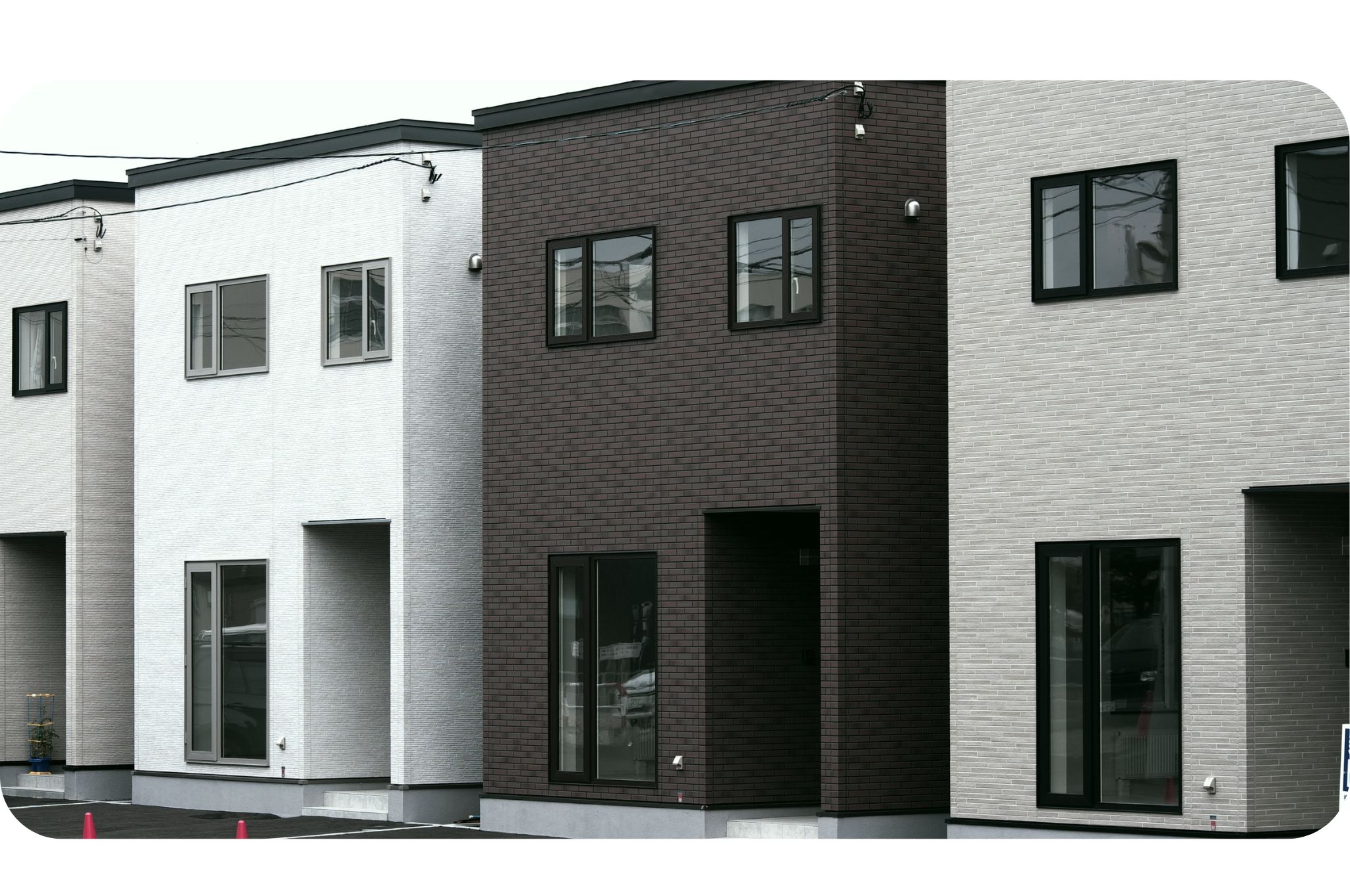3.1 billion homes on the Globe
3rd August, 2021
There are 3,106,844,618 homes in the world and counting! The SHEDyt team thinks...
3.1bn is the number of homes we have calculated across the globe, at the time of writing, and it is growing. This research was completed to estimate the size of the market for the Shedyt platform to understand which countries we should be targeting. In this blog, we share our findings.
Having an understanding of the number of 'new builds' is key for the digital platform's initial use case so this research is organised by existing homes in a country, plus the number of new properties in development too. These residences are calculated as permanent structures where people sleep overnight – including second homes, student accommodation and live/work environments – but not hotels, public buildings or business environments.
Totals Number of Homes by Region.
Regions Existing Homes New Homes
Asia 2,097,037,676 272,358
Africa 419,850,198 2,411,750
Europe 579,205,409 204,959
North America 378,043,702 840,147
South America 249,376,739 1,126,389
Central America 17,204,663 35,746
Australasia 27,511,769 23,2546
Not surprisingly, we found that Asia has the largest housing market based solely on the nominal house and apartments built. An interesting fact was the incredible growth in new home builds on the African continent despite only a couple of countries surpassing the top 50 GDP countries criteria outlined below.
How did we compile the residential property numbers?
I am Paul Piperno, a student at Villanova University’s School of Business majoring in Real Estate and Finance, located in Pennsylvania, USA. For the past couple of months, I’ve been working for a Manchester (UK) based start-up as their Market Analyst. In the bullet points below, I have outlined how we collated these figures under the direction of the PropTech Team:
- We identified every country in the world, divided them into regions and ranked them by GDP.
- The SHEDyt team made assumptions for 143 countries across the globe from the data collated on the top 50 to capture all 193 countries (at the time of writing) across the world.- Searching through various census figures, government agencies, and independent trade bodies, we created this sample size of the top 50 GDP countries.
- After creating an interactive model in Google Sheet outlining our models, we implemented the data from our sample and created summaries such as totals per country.
- To capture the part of the market with incomplete or missing information, we created a system of assumptions such as using household size information in conjunction with population data to determine the number of dwellings where no data existed.
Discoveries we made on the journey collecting property data on new and existing homes
Though we went about collecting this data for SHEDyt's marketing and sales activities, there was additional information we discovered which may be useful for the property management industry too. A culture based on collective housing is prevalent in some countries, therefore housing data is not logged on any government legal registrars – ownership status largely incomplete, which also makes determining the number of existing homes difficult.
- Developing countries have the largest increase in new buildings which will be of interest to residential developers looking for new markets to enter.
- More advanced countries keep track of the number of new builds they plan on completing each year, even setting targets like the UK which wants to build 300,00 per year as of 2020.
-In Italy, for example, at the time of writing, a local mayor was advertising homes in the village for €1/Euro each, therefore, the need for new residential development will be limited, though refurbishment opportunities of properties would probably be greater.
- Vice versa, some emerging economies such as Africa and Australasia face high demand and low supply, compounded by higher immigration and/or high birth rates.
We also have anecdotal evidence that populations are moving from unregistered housing (Slums, owner-built homes without regulation or planning, village dwellings, etc..) to properties that are held in registered areas such as the UK Land register.
Why is this useful to know and to who?
To reconfirm, we created this information for the platform marketing plan and we were occasionally asked by prospective investors about the size of the market. This information now provides a steer on where to market the business, though we'd like to make this information public as the Real Estate development sector may find it useful when navigating opportunities for their businesses.
Reasons we are is sharing this information:
- This information will be of use for our property developers, or the property management sector in general.
- Useful for residential developers looking to track opportunities, growth and or gauge market sizes.
- In the interest of sharing knowledge across for anybody interested in property.
Do you disagree or agree with any of it?
This is a work in progress, can you help us refine this data? Would you like to have access to the Google Sheets model, calculations and data sets we used? Please contact me, Paul Piperno, or the wider team at [email protected] to discuss any of the above.

(B024)
Make Your Business Online By The Best No—Code & No—Plugin Solution In The Market.
30 Day Money-Back Guarantee
Say goodbye to your low online sales rate!








